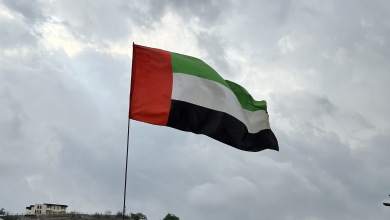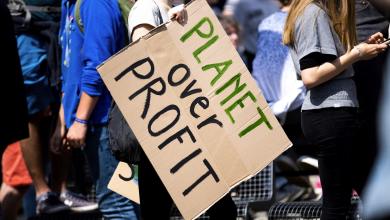Protecting the Great Barrier Reef: How can art make a difference?

Remember, climate change is equal to ocean change. The raging climate emergency is the greatest global threat to coral reef ecosystems. Scientific evidence clearly indicates the Earth’s atmosphere and ocean are heating up, primarily due to greenhouse gases.
Mass coral bleaching events and infectious disease outbreaks are becoming more frequent as temperatures increase. In addition, CO2 absorbed into the ocean from the atmosphere has already started reducing calcification rates by altering the chemistry involved.
It’s called ocean acidification – a process linked to reduced pH levels, that subsequently decrease coral growth and structural integrity. Humans must shrink their carbon footprint to reduce greenhouse gases and help improve overall coral reef condition.
Underwater sculpture trail on the Great Barrier Reef
But how does art play a role in our future for coral reefs? One of the great challenges today is the population often feels untouched by the problems of others and by global issues such as climate change. But art can help. It can be a tool to promote conversation.
One way this is happening is through an underwater sculpture trail on the Great Barrier Reef. Reef sculptures are helping draw attention to the urgency of climate change, reef restoration, inspirational scientists, citizen science and traditional culture.
Essentially, reefs sculptures are a form of artificial reef: man-made structures placed in an aquatic environment to mimic certain characteristics of a natural reef. Moreover, artificial reefs can be sites of ecological research, conservation and arts and culture.
Museum of Underwater Art – a site of increasing importance
The Museum of Underwater Art created with deCaires Taylor at John Brewer Reef, offshore from Townsville, remains the largest underwater sculpture on the planet. The Coral Greenhouse is a skeletal building, accommodating eight human figures.
A recent report on the sculpture found statistically significant increases in fish abundance and diversity. There were no changes over time in invertebrate abundance, invertebrate diversity and tourist perceptions of aesthetic values.
Read More: Here’s how Oulu became ‘the winter cycling capital of the world’
The museum has been receiving increasing support. It has provided jobs and revenue, raised awareness and amplified important messages about reef conservation. In addition, it has also become a reef restoration demonstration site. But the museum’s future remains uncertain.



